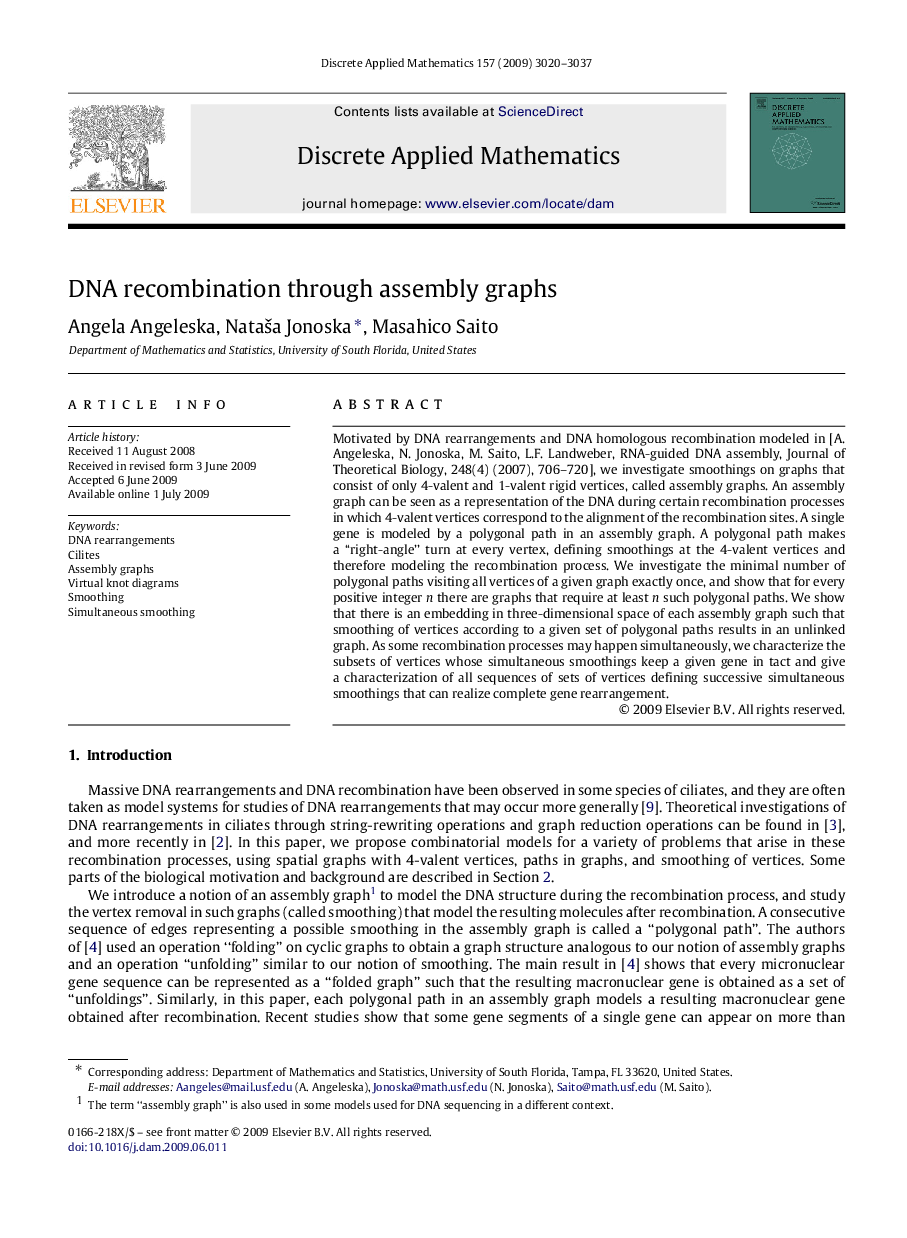| Article ID | Journal | Published Year | Pages | File Type |
|---|---|---|---|---|
| 420381 | Discrete Applied Mathematics | 2009 | 18 Pages |
Motivated by DNA rearrangements and DNA homologous recombination modeled in [A. Angeleska, N. Jonoska, M. Saito, L.F. Landweber, RNA-guided DNA assembly, Journal of Theoretical Biology, 248(4) (2007), 706–720], we investigate smoothings on graphs that consist of only 4-valent and 1-valent rigid vertices, called assembly graphs. An assembly graph can be seen as a representation of the DNA during certain recombination processes in which 4-valent vertices correspond to the alignment of the recombination sites. A single gene is modeled by a polygonal path in an assembly graph. A polygonal path makes a “right-angle” turn at every vertex, defining smoothings at the 4-valent vertices and therefore modeling the recombination process. We investigate the minimal number of polygonal paths visiting all vertices of a given graph exactly once, and show that for every positive integer nn there are graphs that require at least nn such polygonal paths. We show that there is an embedding in three-dimensional space of each assembly graph such that smoothing of vertices according to a given set of polygonal paths results in an unlinked graph. As some recombination processes may happen simultaneously, we characterize the subsets of vertices whose simultaneous smoothings keep a given gene in tact and give a characterization of all sequences of sets of vertices defining successive simultaneous smoothings that can realize complete gene rearrangement.
